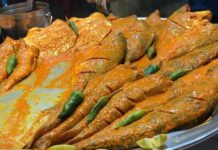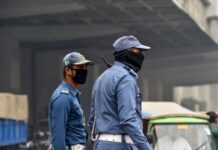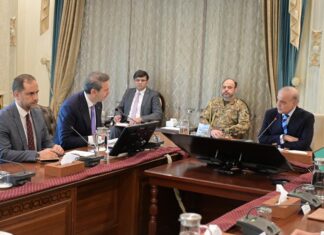Recently, Kashmiris around the globe celebrated Youm-i-Tasees, or the Liberation Day of Azad Jammu and Kashmir (AJK), as they do every year (Oct 24). It was on this day that the AJK government was established, led by Sardar Ibrahim Khan as the first president. The independence was achieved after a long history of sacrifices rendered by Kashmiris, Pakistanis and, especially, by the valiant soldiers of Pakistan Army.
The Kashmiris living in the India-occupied Kashmir have a bitter history of injustice and repression. Under the terms of the Treaty of Amritsar in 1846, the British government sold Kashmir for a sum of 7.5 million Nanak Shahee rupees to Gulab Singh, who later acquired the title of maharaja. However, the troubles of the region have a history going even further back.
One example of cruelty was seen in 1832 when there was a rebellion in Poonch by the local tribes, and Gulab Singh was sent to deal with it. This rebellion was headed by Sardar Shamas Khan and two of his close accomplices, Sardar Sabaz Ali Khan and Sardar Mali Khan.
Gulab Singh first entered Poonch. His other camps were established in the villages of Mang and Bagh. He killed Sardar Mali and Sardar Sabaz and stuffed their skins with straw. He even killed innocent young children.
Sardar Shamas along with his nephew Rajwali was killed by Ottam Singh. Their heads were later exhibited in two iron cages at the top of the Adha Dek pass above Poonch where they remained for several years.
Talking of gory incidents and the reaction of the locals, July 21, 1924, stands out as the day when first signs of mass public awakening were noted. Resham Khana was an industrial unit in Srinagar having 5,000 workers. The workers were protesting against low wages out of which corrupt Hindu officers used to take a substantial percentage in bribe. This uprising was crushed by Dogra cavalry, which killed Muslims with both bayonets and bullets, trampling upon their bodies. Police arrested leading Muslim workers, but the unrest lasted for a while.
On July 13, 1931, a large number of Kashmiris gathered in front of the central jail in Srinagar during the trial of a youth, Abdul Qadeer, who was accused of leading an agitation. As the time for prayer approached, a young Kashmiri stood up for the Azaan. The Dogra police opened fire and he was martyred on the spot. Another young man took his place to complete the Azaan. He, too, was shot dead. This way, some 20 Kashmiris embraced martyrdom one after the other. Such incidents gave impetus to the independence movement.
In early 1947, an uprising started against the maharaja in Poonch, an area bordering Rawalpindi. The maharaja’s government had imposed unfair taxes on the peasantry, which resulted in protests. The administration used forceful tactics to crush the protests. A large number of people, mostly retired and non-active soldiers of World War II, rebelled against the regime and took over the control of almost the whole district.
Following this, the leaders of Muzaffar-abad, Poonch and eastern parts of Mirpur announced temporary Azad government in Rawalpindi on Oct 3, 1947. About 3,000 people from the erstwhile North West Frontier Province entered Jammu and Kashmir on Oct 21, and captured Muzaffar-abad and Baramulla. Three days later, the maharaja requested military assistance from India, which said it was unable to help unless the state acceded to India.
Accordingly, on Oct 26, 1947, the Instrument of Accession was signed, and the Indian troops were immediately airlifted into Srinagar. Pakistan intervened subsequently, and the war resulted in the liberation of AJK as the Indian army was restricted to the other side of the Line of Control.
The journey is far from over, but there is reason to remain optimistic that the day will finally come when we will regain our lost arm, the India-occupied Kashmir.
ABDUL BASIT ALVI
MUZAFFARABAD





















